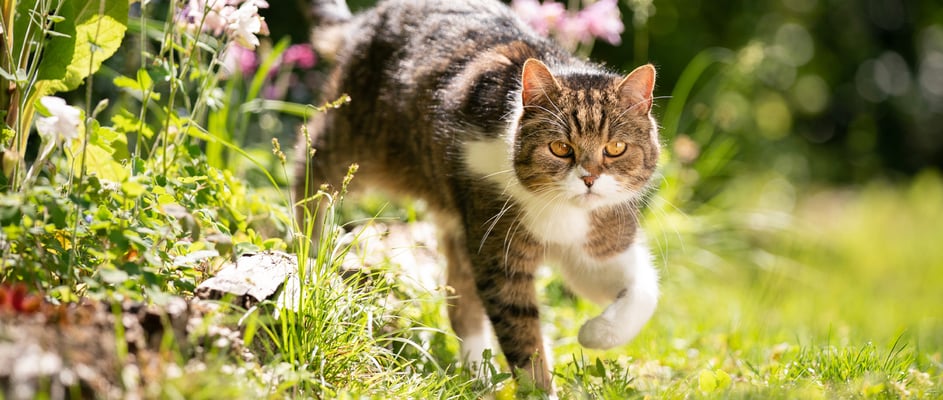The guide to owning a tabby cat.
Looking to welcome a cat into your home but not sure where to begin? Welcome, you’re in the right place. Secure a no-obligation quote with Waggel to make sure your new friend gets the cover they deserve.
Jump to:
Stats at a glance.
A note on the 'breed'.
A tabby cat is famous for its tabby pattern: those swirling stripes or spots that appear on countless feline companions.
But a tabby is not a breed in the strict sense. Instead, it’s a striking set of markings found in many breeds worldwide.
You’ll find tabby actually describes a cat’s coat colouration and mark on their foreheads rather than a particular breed.
Below, we’ll explore the unique traits of tabby’s coats, where they come from, and how to keep them healthy and happy at home in a general sense as each breed type may differ.
History of the tabby cat.
Tabby markings date back thousands of years. Many believe the first African wildcat ancestors showed early versions of stripes or spots, passing them on through the gene responsible for the Agouti hairs.
As different cats around the world evolved, these striking lines turned into distinctive mackerel stripes, swirling classic tabby patterns, bold spotted tabby fur for extra flair, and subtle ticked tabby coats.
Unlike a pure breed of cat, the tabby’s origins are entwined with domestication itself. They likely accompanied humans as we travelled, which is why we see them in different breeds today. From the American Shorthair to the Egyptian Mau and the Ocicat.
Whether you have a kitty with random patches of tabby or a full set of mackerel tabbies, know that the tabby pattern has a warm spot in cat-loving cultures across the globe.
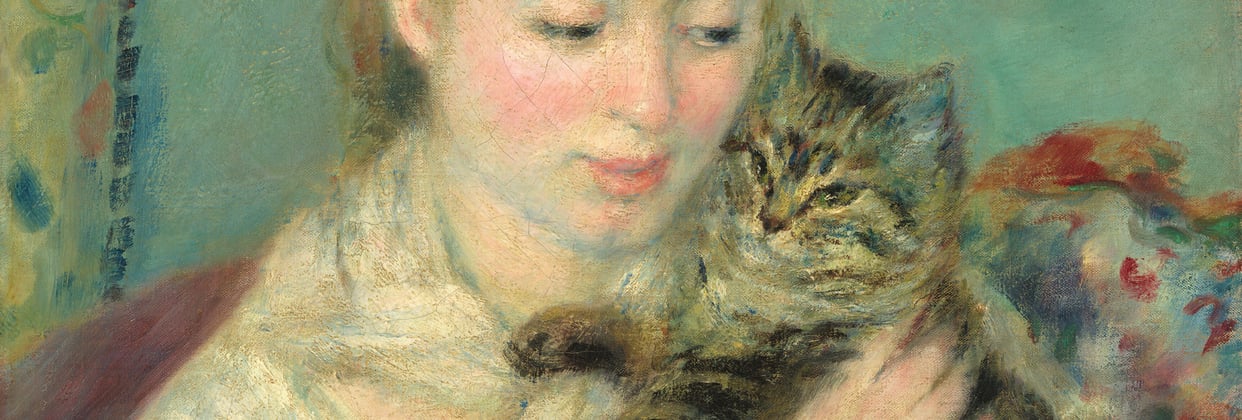

Physical characteristics.
A tabby cat's coat might show thin stripe lines, wide bull’s-eye whorl shapes, or broken stripes that end up looking like the spotted tabby patterns we just mentioned.
Their body size varies greatly. A tabby can be small and lean or hefty like a part-Maine coon. The tail might feature stripes running around it, and the legs and tail often showcase rings of colour.
When a tabby lounges in a sunlit window, you’ll notice how the cat in the sun highlights each stripe or spot.
Colours and patterns.
There are several types of tabby cat:
Mackerel tabbies: Vertical stripes running down the sides, somewhat similar to the mackerel fish pattern.
Classic tabby: A bold marble or bullseye swirl on the sides of the body.
Spotted tabby: Random patches of spots instead of continuous stripes.
Ticked tabby: Each hair has alternating bands of colour, giving a finer, shimmering look.
Tabbies can come in a range of base colours: orange tabbies, grey Tabbies, browns, or even silver. Some cats might blend calico or tortoiseshell with tabby lines, creating caliby and torbie patterns.





Temperament and personality.
Because a tabby cat can belong to any particular cat lineage, their cat personality is a big mixture.
Still, many tabby cats are famously bold, curious, and friendly. We often see them greeting family members at the door, circling ankles for attention, or napping in sunbeams like content little lions.
The tabby label alone doesn’t guarantee a certain disposition, but plenty of owners swear their orange cats have extra cheekiness, while brown Tabbies can be affectionate lap cats. Each kitty is unique, so always take time to build trust, offer gentle handling, and respect personal space.
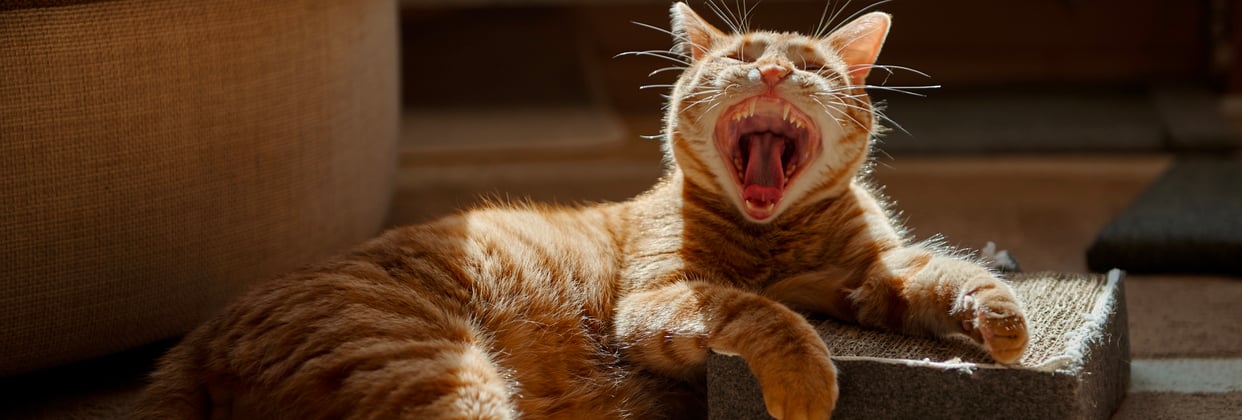

Health considerations.
As the tabby coat is found in a range of domestic cats, potential health issues vary. Some Tabbies have robust genes, while others may carry certain breed-specific risks. Common things to watch for include:
Weight management: Some Tabbies can overeat, so keep an eye on portion sizes.
Coat care: Watch for dryness or excess shedding.
General wellness: If you notice sudden food habit changes, vomiting or discomfort, always talk to a vet quickly.
For financial peace of mind if something goes wrong, you can browse our cat insurance guide to see how cover might help in emergencies.
You can also head over to our tabby cat insurance page for more info.
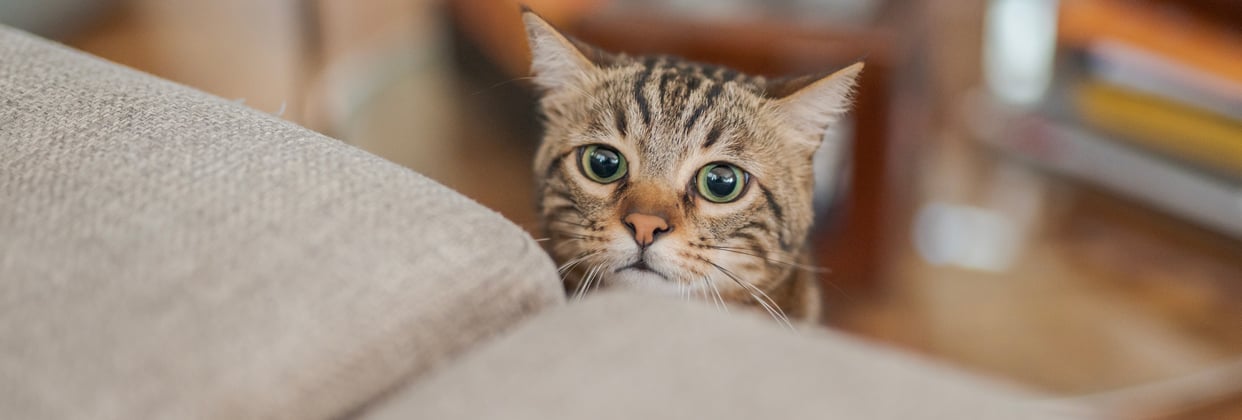

Living with a tabby cat.
We find that living with a tabby cat is a joy. They typically adapt well to indoor living but still need mental stimulation. Provide climbing posts, interactive toys, and cosy window seats. That helps them get their daily dose of exercise and prevents bored or destructive behaviour.
If you share your home with a dog, you might keep everyone friendly by following tips on how to introduce a puppy to a cat. A well-socialised tabby generally settles in nicely with other pets, given a slow introduction and a safe retreat space.
Grooming and care.
Even though the tabby pattern stands out, Tabbies aren’t necessarily high-maintenance. A short haired tabby can often manage its own grooming. For that extra shine:
Gently brush once or twice a week to remove loose hair and reduce shedding.
Keep nails trimmed or offer scratching posts, so they can look after their claws.
Occasionally check ears and teeth. For dental tips, see our ultimate guide to cat dental care.
If your Tabbies roll around in muddy spots or have a particularly messy coat, you could (try) to bathe them. Some cats handle water better than others, though. See How to bathe a cat for step-by-step advice.
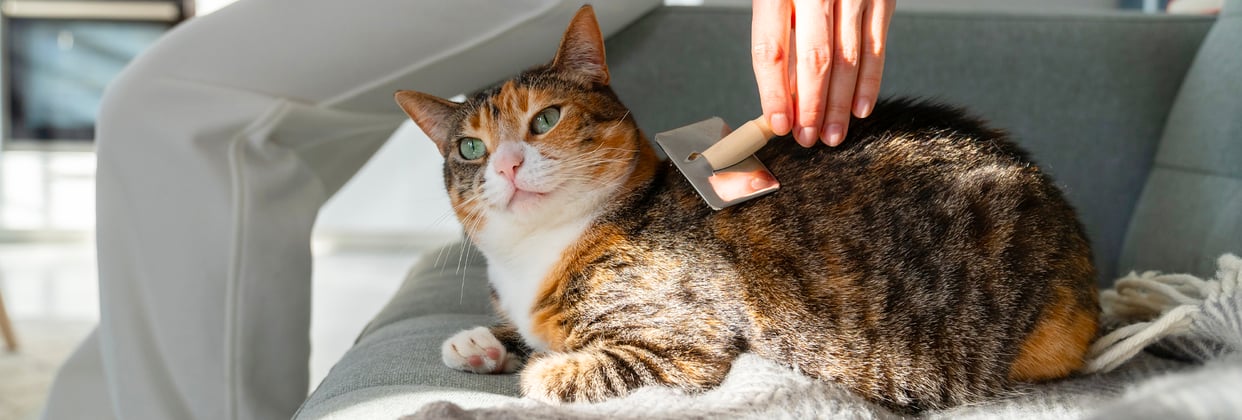

Diet and exercise.
Any good-quality cat food can work if it provides balanced nutrition. We recommend feeding by life stage (e.g., kitten, adult, senior) and watching portion sizes. Overfeeding is a top cause of obesity in cats.
For exercise, aim for 20–30 minutes of play each day. Feathers, laser pointers, or tossable toys keep them chasing and hunting. Some Tabbies even enjoy puzzle feeders that make them work for their meals.
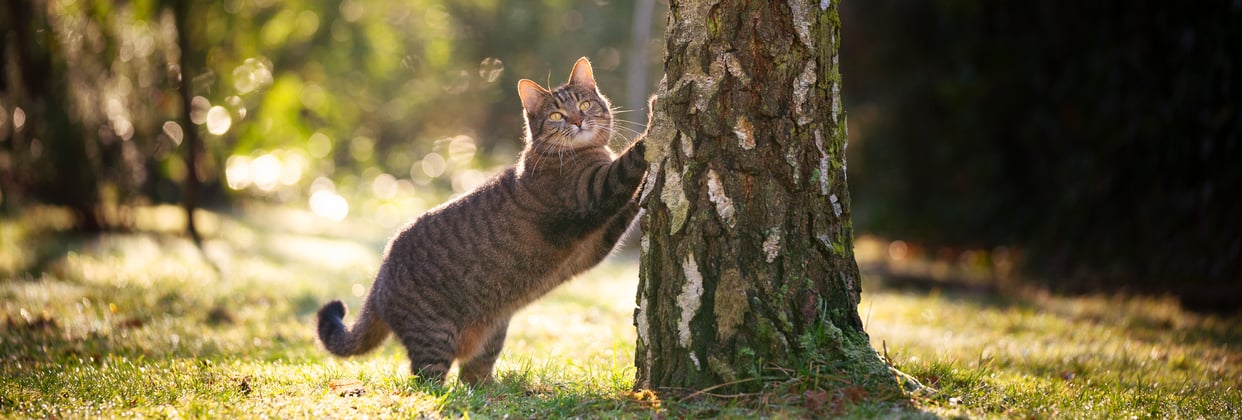

Is a tabby cat right for you?
If you long for an affectionate pet with interesting tabby markings, a tabby can be a lovely addition. They’re low-fuss in grooming, and their varied personalities can fit many lifestyles. Since tabby coats appear in so many cat lines, it’s a matter of finding a tabby who loves your home and routine.
Do keep in mind the time you have for daily interaction. Also consider whether you might want a second cat, especially if your new Tabbies crave companionship. With consistent love and care, a tabby will reward you with playful antics and cozy purring sessions.
Frequently asked questions.
Is a tabby a real breed?
No. A tabby is not a breed; it’s a marking present in many breeds of cat. The term tabby points to the coat pattern, not a separate, standalone lineage.
Do tabby cats have an M on their forehead?
Yes, many tabbies boast that m-shaped mark on their forehead. It’s one of the easiest ways to distinguish them.
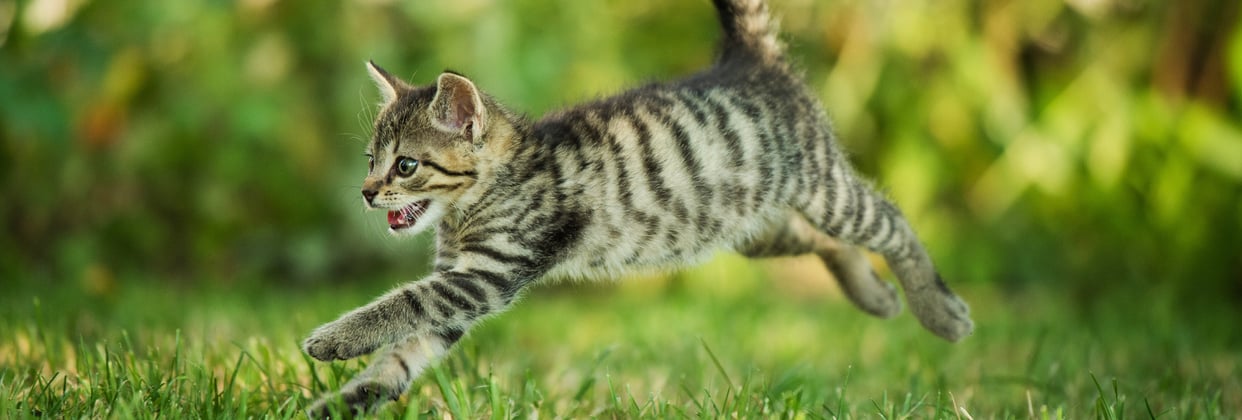

Are tabby cats friendly?
They can be. Personality depends more on genetics and socialisation than coat pattern alone. Many tabbies are known for being sociable and warm.
What are orange tabbies?
They’re simply tabbies with an orange hue. Orange cats often have bold striped or spotted patterns, and they’re sometimes called “ginger Tabbies.”
Do tabbies need special grooming?
Not usually. However, long haired tabbies (potentially part Coon or other specific breeds) will need more frequent brushing to prevent tangles.
Pet insurance for tabby cats.
Life with a tabby cat can be a colourful adventure. From mackerel tabbies with thin stripes to our spotted tabby sweethearts, each kitty shows off a unique tapestry of patch, stripe, and shine. With proper nutrition, regular vet visits, and loving attention, your tabby companion will stay healthy, amused, and ready for a purr-filled snuggle anytime you call.
Ready to safeguard your tabby cat? Get your free quote and join our community.

